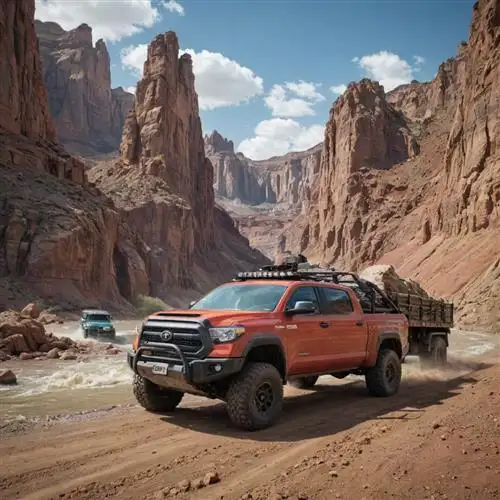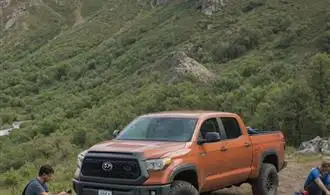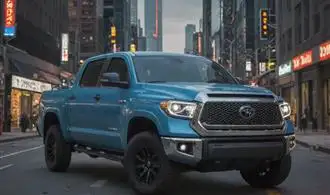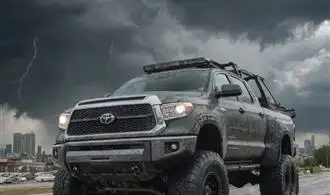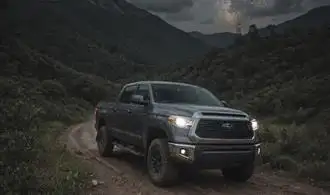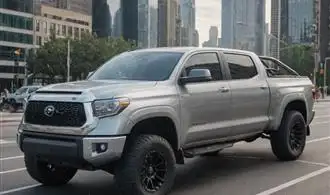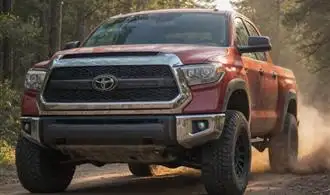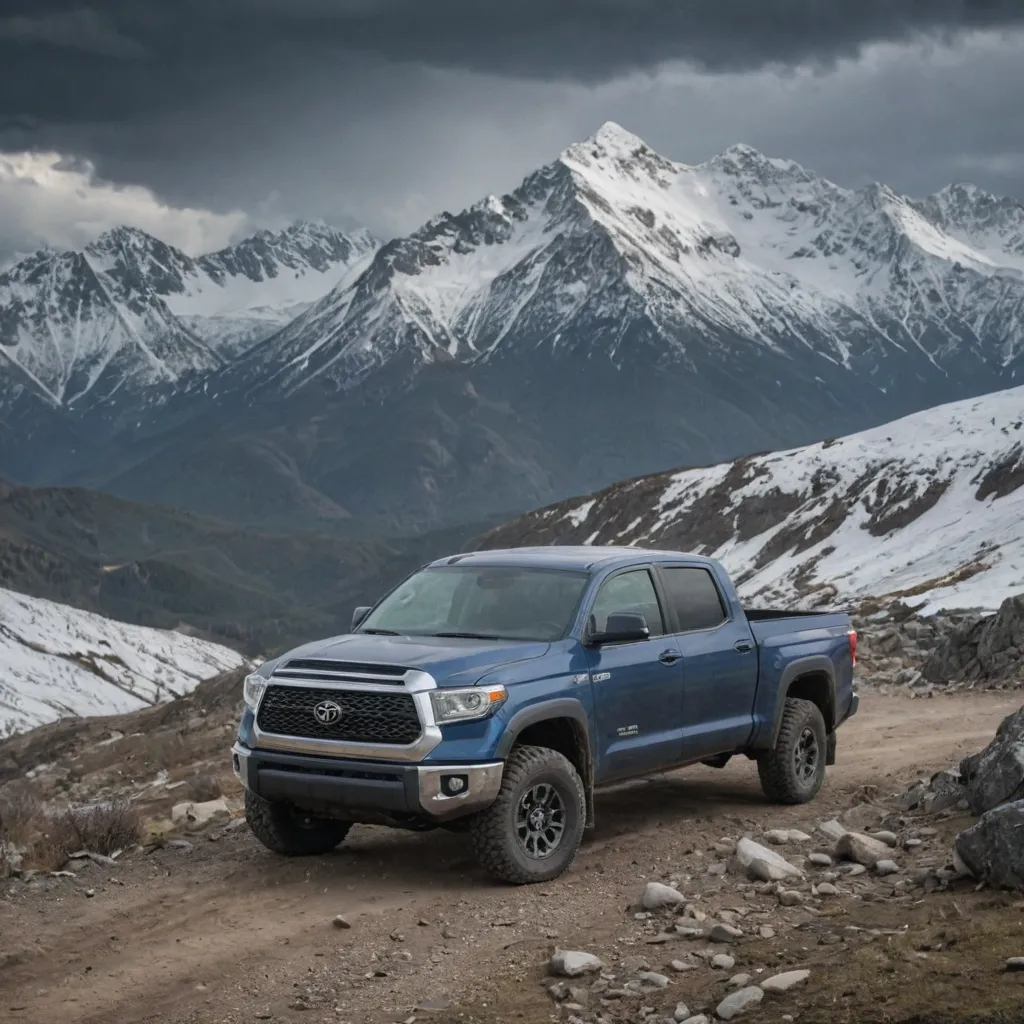
Optimizing Fuel Efficiency
As the owner of a Toyota Tundra, maximizing fuel efficiency is likely a top priority. Your Tundra is a powerful and capable truck, but with the right techniques, you can improve its gas mileage and get more out of every tank. From monitoring your driving habits to performing regular maintenance, there are several strategies you can implement to enhance the fuel efficiency of your Tundra.
One of the most effective ways to boost fuel economy is to closely monitor your driving behavior. Avoid sudden acceleration and braking, as these can significantly impact your fuel consumption. Instead, aim for a smooth and gradual acceleration, maintaining a steady speed on the highway. Additionally, be mindful of your idling habits – excessive idling can waste fuel, so try to limit it whenever possible.
Proper tire inflation is another critical factor in optimizing fuel efficiency. Ensure that your Tundra's tires are inflated to the recommended pressure, which can typically be found in the driver's side door jamb or in your owner's manual. Properly inflated tires not only improve fuel economy but also enhance your vehicle's handling and safety.
Regular maintenance is also essential for maintaining optimal fuel efficiency. This includes adhering to the manufacturer's recommended service schedule, such as oil changes, air filter replacements, and tune-ups. Keeping your Tundra well-maintained can help ensure that its engine is running at peak performance, which can directly translate to improved fuel economy.
If you're looking to tow with your Toyota Tundra, be sure to check out our A Beginner's Guide to Towing with the Toyota Tundra. Proper towing techniques and load management can also play a role in optimizing your Tundra's fuel efficiency when hauling heavy loads.
Enhancing Towing Capacity
When it comes to the Toyota Tundra, one of the key features that sets it apart is its impressive towing capacity. However, there are several ways you can further enhance this capability to truly maximize the truck's hauling potential. From upgrading the suspension to optimizing your trailer setup, the following tips will help you get the most out of your Tundra's towing prowess.
Suspension Upgrades: The Tundra's stock suspension is designed to provide a comfortable ride, but it may not be enough for heavy-duty towing. Consider upgrading to a premium suspension system, such as a lift kit or heavy-duty shocks, to improve the truck's stability and control when towing large loads. This will not only enhance your Tundra's towing capacity but also provide a more stable and confident ride, even with a heavy trailer in tow.
Trailer Selection and Configuration: Choosing the right trailer for your needs is crucial for maximizing your Tundra's towing capability. Opt for a lightweight trailer with a low center of gravity to minimize the strain on your truck. Additionally, ensure that the trailer is properly balanced and the load is distributed evenly to maintain optimal handling and control.
Hitch and Towing Accessories: Invest in a high-quality hitch system that is rated for your Tundra's maximum towing capacity. This will provide a secure and stable connection between your truck and the trailer. Additionally, consider adding accessories like weight-distributing hitches or sway control systems to further enhance the stability and control of your towing setup.
Maintenance and Preparation: Regular maintenance of your Tundra's engine, transmission, and other towing-related components is essential for maintaining its towing capacity. Ensure that your truck is in top condition before every towing adventure by checking fluid levels, brake performance, and tire pressure. Additionally, familiarize yourself with your Tundra's towing capacity and payload limitations to avoid exceeding the vehicle's capabilities.
Customizing Suspension and Handling
Enhancing the suspension and handling of your Toyota Tundra can significantly improve its performance, comfort, and off-road capability. When it comes to customizing this aspect of your truck, there are several key considerations to keep in mind. First and foremost, it's crucial to understand the various suspension components and how they work together to provide a smooth, stable ride.
The Tundra's suspension system consists of a combination of coil springs, shock absorbers, and control arms, each of which plays a vital role in absorbing the impact of the terrain and maintaining vehicle stability. Upgrading these components can provide a number of benefits, including improved handling, increased ground clearance, and a more comfortable ride.
One popular upgrade for Tundra owners is the installation of aftermarket lift kits. These kits raise the vehicle's ride height, allowing for larger tires and enhancing the truck's off-road capabilities. When selecting a lift kit, it's essential to consider factors such as the desired level of lift, the compatibility with your Tundra's specific model and year, and the quality of the components used.
Another important aspect of customizing your Tundra's suspension and handling is the choice of shock absorbers. Upgrading to high-performance shocks can dramatically improve the truck's responsiveness, control, and overall ride quality. Some popular options include gas-charged shocks, which offer increased damping and better heat dissipation, as well as adjustable shocks that allow you to fine-tune the ride characteristics to your preferences.
In addition to lift kits and shock upgrades, Tundra owners may also consider modifying the vehicle's control arms, sway bars, and other suspension components. These upgrades can help improve the truck's handling, reduce body roll, and provide a more precise, responsive driving experience.
Maximizing Cargo Capacity
The Toyota Tundra is renowned for its impressive cargo capacity, making it a versatile choice for those seeking a reliable and capable truck. To get the most out of your Tundra's hauling potential, consider the following strategies:
Utilize the Bed Dimensions: The Tundra's spacious bed dimensions provide ample room for transporting a wide range of items. Measure the length, width, and depth of the bed to determine the maximum size and weight of cargo you can accommodate. This information will help you plan your loads effectively and ensure you're not exceeding the truck's payload capacity.
Maximize Vertical Space: The Tundra's tall bed walls allow you to stack items vertically, maximizing the available cargo space. Consider investing in bed organizers, dividers, or tool boxes to create distinct storage compartments and keep your items secure during transport.
Harness the Power of Tie-Down Hooks: The Tundra is equipped with multiple tie-down hooks throughout the bed, enabling you to secure your cargo firmly in place. Utilize these hooks to strap down bulky or heavy items, ensuring they remain stable and prevent shifting during the journey.
Explore Accessory Options: Enhance your Tundra's cargo-hauling capabilities with a variety of available accessories. From bed liners and tonneau covers to cargo racks and bed extenders, these add-ons can provide additional storage solutions and protect your belongings from the elements.
Consider Payload Capacity: Before loading up your Tundra, be mindful of the truck's maximum payload capacity. This figure represents the maximum weight the vehicle can safely carry, including the weight of passengers, cargo, and any accessories. Ensure you do not exceed this limit to maintain optimal performance and safety.
Proper Load Distribution: Distribute the weight of your cargo evenly throughout the bed to maintain balanced handling and stability. Heavier items should be placed closer to the cab, while lighter items can be positioned towards the tailgate. This approach can help prevent uneven weight distribution, which can impact the Tundra's driving dynamics.
Improving Off-Road Performance
To get the most out of your Toyota Tundra's off-road capabilities, there are several key areas to consider. One of the most important upgrades is to the suspension system. Investing in a quality lift kit can increase your ground clearance, allowing you to tackle more challenging terrain. Look for kits that provide a balanced lift, ensuring your vehicle's geometry remains optimal for both on-road and off-road driving.
Tires are another critical component for off-road performance. Equip your Tundra with rugged all-terrain or mud-terrain tires that can grip the surface and provide the traction you need. These tires often feature deeper, more aggressive tread patterns and are designed to excel in soft, loose, or uneven conditions. When selecting tires, consider the intended use of your vehicle and the types of terrain you'll be navigating.
Skid plates and rock sliders can also be valuable additions to your Tundra's off-road setup. Skid plates protect the undercarriage from damage when navigating over obstacles, while rock sliders shield the body and doors from scratches and dents. These accessories can help maintain the integrity of your vehicle and ensure it continues to perform reliably even in the toughest off-road conditions.
Upgrading your Tundra's differential and transfer case components can also enhance its off-road abilities. Consider installing locking differentials or limited-slip differentials, which can improve traction and prevent wheel spin in challenging situations. Additionally, upgrading the transfer case can provide more low-range gearing for better control and torque when crawling over obstacles.


